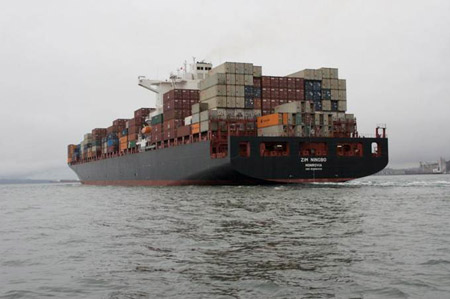Column: Trump’s Non-Deal Deal with China is Mainly Significant for Sentiment – Russell
Category: Trade

(Reuters) – When is an agreement not really an agreement? When it is the latest maneuver in the long-running trade dispute between the United States and China.
That’s not to say the Oct. 11 announcement by both parties isn’t significant, but it is still a long, long way from the sort of comprehensive resolution sought not only by the world’s two biggest economies, but also by the rest of the world fearful of a trade war-inspired recession.
President Donald Trump went so far as to call the announcement a “lovefest,” while Chinese Vice Premier Liu He was more circumspect, noting that the two sides had made “substantial progress in many fields.”
In some ways the positive reaction by financial and commodity markets to the announcement in Washington was more justified than previous bouts of optimism, which have generally been followed by a fresh breakdown in talks and an escalation of the tariff war.
This was the first time that the two sides appeared determined to get something down on paper, with a “Phase 1” deal now scheduled to be signed at a Nov. 16 summit of the Asia Pacific Economic Cooperation countries in Chile.
But the good news from the Oct. 11 announcement is all largely sentiment, with scant detail on what has, or has not, actually been agreed between the two sides.
The tit-for-tat tariffs have also not been removed or wound back, the only concession being that the United States won’t lift tariffs to 30% from 25% on about $250 billion in Chinese goods that was supposed to have gone into effect on Tuesday.
The main item being touted by Trump was a repetition of his claim that China will once again start buying vast quantities of U.S. agricultural produce, with the president saying Beijing will buy up to $50 billion of such goods.
That seems fantastically optimistic and Treasury Secretary Steven Mnuchin said purchases would gradually be ramped up to this level.
Even a gradual increase to $40 billion to $50 billion would represent quite an increase on the value of U.S. agricultural goods being bought by China, which was more in the region of $23 billion a year prior to the start of the trade dispute in the middle of last year.
About 52% of U.S. agricultural exports to China prior to the trade dispute were soybeans. About 27.7 million tonnes were imported in the 2017/18 season, before the trade dispute saw that drop to 13 million in 2018/19.
If China returned to buying around 28 million tonnes a year of soybeans, this would be worth about $9.7 billion at the current futures price of 936 cents a bushel.
While this would no doubt be welcome news for U.S. soybean farmers, it implies that for U.S. agricultural exports to reach Trump’s target, there would have to be a staggeringly huge increase in shipments of not only soybeans, but virtually everything else, including hogs, beef, poultry and nuts.
WHERE’S THE ENERGY?
There was also no mention of energy exports from the United States to China, the one area that had been booming prior to Trump launching his tariffs.
There had been some recent positive moves for U.S. crude oil exporters, with five tankers scheduled to offload a total of 9.4 million barrels of crude in October, according to vessel-tracking and port data compiled by Refinitiv.
Three of those cargoes have already discharged and two are due to arrive toward the end of this month, according to Refinitiv.
If all the cargoes are unloaded, October’s imports will be about 303,000 barrels per day (bpd), the second-highest this year after August’s 374,000 bpd.
However, for the first 10 months of the year, China’s imports of U.S. crude have averaged only 121,000 bpd, well below the 344,000 bpd for the first six months of 2018, prior to the start of the tariff dispute.
Furthermore, a sharp rise in tanker freight rates after the Trump administration imposed sanctions on four Chinese shipping companies for continuing to do business with Iran has made U.S. crude less competitive in Asia, given the longer voyage than from competitors in the Middle East and Africa.
In liquefied natural gas (LNG), U.S. exporters remain shut out of China, the fastest growing market for the super-chilled fuel.
No U.S. cargo has been discharged since March, with the one delivery that month being the last of just three in 2019.
In the first half of 2018 China imported 25 U.S. cargoes for a total of 1.73 million tonnes.
Coal tells a similar story to LNG, with cargoes slowing to a trickle, with Refinitiv data showing one shipment discharged in September, and one vessel discharging in two ports in August.
No coal vessels are currently underway from the United States to China, and imports for the year so far have totaled 1 million tonnes, down from 3.2 million in 2018 and 6 million in 2017.
If the United States really is to boost exports to China, then energy clearly has to come back into the deal as agricultural goods alone is never going to be enough.
While the details of the “Phase 1” agreement still have to be shown, for now it looks like Trump has surrendered his previous stance that he would only take a single, comprehensive deal, and the concessions on agriculture he has got from Beijing amount to little more than a return to the situation that existed prior to the start of trade dispute.

